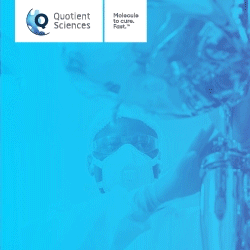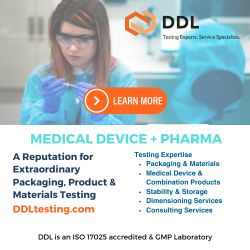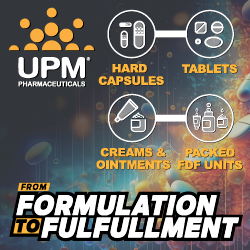Inmagene Reports Topline Results From Phase 2a Study of a Nondepleting Anti-OX40 Monoclonal Antibody With an Extended Half-Life in Patients With Alopecia Areata
Inmagene Biopharmaceuticals recently reports topline results from the Phase 2a trial of IMG-007 in patients with severe alopecia areata (AA).
“AA is an I&I disease with tremendous unmet needs, especially for drugs with more favorable safety profiles,” said Jonathan Wang, PhD, founder, Chairman, and CEO of Inmagene. “The marked and durable clinical and pharmacodynamic activities observed in Cohort 2 after a 4-week treatment, combined with a well-tolerated profile, suggest that blocking the OX40-OX40L signaling may be a novel approach to the treatment of AA.”
The Phase 2a trial (NCT06060977) was a multiple ascending dose study evaluating the safety, pharmacokinetics, and efficacy of IMG-007 in adult AA patients with 50% or greater scalp hair loss, measured by the SALT score. A total of 29 patients were enrolled from 11 centers in the US and Canada, including 6 patients in Cohort 1 who received up to three intravenous (IV) doses of 300 mg over four weeks (Baseline, Week 2 and 4) and 23 patients in Cohort 2 who received up to three IV doses of 600 mg over four weeks. Patients were followed up to Week 24. Sixteen patients in Cohort 2 also participated in an optional extended follow-up period up to Week 36.
Key disease characteristics at baseline included a mean duration of current AA episode of 3.0 years and a mean SALT score of 80.4. Nine of 29 (31%) enrolled patients had baseline SALT scores of 95 or greater. Scalp biopsy samples were collected at Baseline and Week 16 for the evaluation of inflammatory biomarkers. Key study endpoints included safety and percentage change from baseline in SALT score over time.
The four-week treatment resulted in a dose-related clinical activity of hair regrowth. Patients in Cohort 1 did not show a meaningful reduction from baseline (a mean of 1.1%) in SALT score at Week 24. Patients in Cohort 2 showed a mean reduction from baseline in SALT score of 14.3% at Week 24 and 21.7% at Week 36, which did not plateau by Week 36, approximately eight months after the last dose. At Week 36, 25% of patients in Cohort 2 achieved 30% or greater reduction from baseline in SALT score.
In Cohort 2, patients who had a baseline SALT score of 50 to less than 95 showed a greater degree of improvement compared to those in the overall group (Table 1).
Table 1. Improvement in SALT score in patients in Cohort 2 who had baseline SALT score of 50 to less than 95.

At baseline, patients showed activations of inflammatory markers of Th1, Th2, and CD8+ T cells in the AA lesional scalp, compared to the non-lesional scalp. A four-week treatment with three doses of 600 mg IMG-007 resulted in a marked inhibition of inflammatory markers of Th1, Th2 and CD8+ T cells at Week 16, approximately three months after the last dose.
IMG-007 was generally well-tolerated, with no serious adverse events (SAEs). All treatment-emergent adverse events (TEAEs) were mild or moderate in intensity. TEAEs which occurred in at least 2 patients in any treatment group were headache (4 [13.8%]), nasopharyngitis (3 [10.3%]), hypertension (2 [6.9%]), and streptococcal infection (2 [6.9%]). There were no reports of pyrexia or chills.
“Alopecia areata is a common chronic I&I disease affecting up to 2% of the population, including children. Currently, oral JAK inhibitors are the only systemic treatment options, but they require daily dosing and carry serious safety warnings, thus requiring routine clinical and laboratory monitoring. Safe and effective biologic therapies are desirable for the long-term management of this devastating disease,” said Yufang Lu, M.D., Ph.D., Chief Medical Officer of Inmagene. “The promising results from Cohort 2 in this study suggest that IMG-007 could be a potential biologic therapy for the long-term treatment of patients with AA.”
Data from this study will be presented at an upcoming scientific conference.
Inmagene is a global clinical-stage biotechnology company focused on developing novel therapeutics for immunological and inflammatory (“I&I”) diseases. The company has multiple drug candidates with best-in-class potential. The lead asset IMG-007, a nondepleting anti-OX40 monoclonal antibody with extended half-life, is in Phase 2 development for moderate-to-severe atopic dermatitis (AD) and alopecia areata (AA). IMG-004, a non-covalent reversible oral BTK inhibitor with an extended half-life and pharmacodynamic effect, enabling once-daily dosing potential, is ready for Phase 2 development. For more information, please visit www.inmagenebio.com.
IMG-007 is a humanized, non-depleting, subcutaneous-enabled, anti-OX40 IgG1 mAb with a silenced antibody-dependent cell-mediated cytotoxicity (ADCC) function and an extended half-life. The OX40-OX40L axis is important in T cell activation, expansion, and survival, thereby playing an important role in the pathogenesis of a spectrum of I&I diseases. In nonclinical studies, IMG-007 potently blocked the signaling between OX40 and OX40L. IMG-007’s SC formulation has demonstrated a half-life of 34.7 days which would support the potential for competitive dose regimens. In a Phase 2a study in patients with moderate-to-severe atopic dermatitis, IMG-007 demonstrated sustained clinical activity and a well-tolerated profile with no reports of pyrexia or chills. IMG-007 was originally discovered by HUTCHMED.
Total Page Views: 1382












